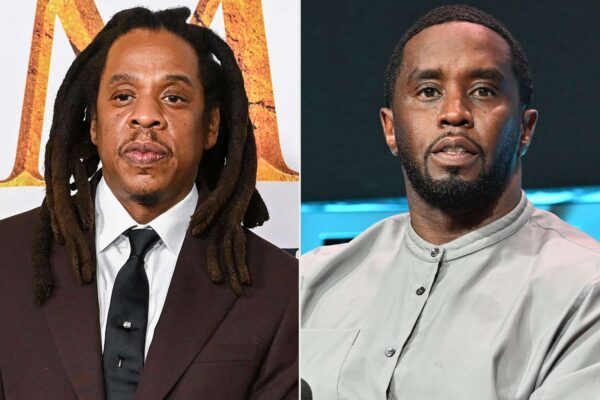[Speaking Truth To Power]
Ever since the acquittal of George Zimmerman by a virtually all-White jury in Florida, African-Americans have been struggling to come to terms with the larger implications of this verdict.
For, once again, another killer of a Black man has been set free by America’s justice system. From the start the controversial case revolved around issues relating to perceptions of crime—and the racial profiling of Black men as primary perpetrators of criminality.
What does this verdict tell us about America’s criminal justice system and the nation’s entrenched racial divide?
On Saturday night, a jury of six women acquitted George Zimmerman of second-degree murder and manslaughter for the killing of 17-year-old Trayvon Martin on February 26, 2012, in Sanford, Florida. The verdict was shockingly far from unexpected. Sadly, Blacks rarely expect to get justice in American courts when the killers of Blacks aren’t Blacks.
The list of African-Americans who’ve been denied justice by America’s justice system—which made it possible for their killers to walk—is too long to list here. In more recent times, we witnessed the killers of Amadou Diallo, Timothy Stansbury and Sean Bell all escape punishment for their unjustified actions; police officers in these cases.
In this case, the signs were there Mr. Zimmerman was about to slither out of court a free man. Some say the prosecution sabotaged their own case. Given the curious circumstances in this case, it’s hard to call these people conspiracy kooks.
For one thing, Mr. Zimmerman was arrested only after a public hue and cry, primarily, by African-Americans who wanted to know why Zimmerman killed the unarmed teen. Mr. Martin was killed on the way back to his father’s house after visiting a convenience store—where he purchased an ice tea and a bag of Skittles. At that time, the Sandford Police declined to arrest Mr. Zimmerman, supposedly, with the blessing of State Attorney Norm Wolfinger—even though a lead detective recommended charging him with manslaughter. After people protests, State Attorney Angela Corey was assigned special prosecutor to reside over the case by Florida Governor Rick Scott.
Did Florida authorities want to obtain a conviction, or, did they just provide us with a sham show trial?
Early last week, Zimmerman’s defense team was able to cast doubt –for those eager for it– on two crucial elements of the prosecution case essential in establishing proof that Mr. Zimmerman’s actions constituted intent and malice aforethought—which are necessary to sustain a conviction for a charge of second-degree murder.
The first issue was conclusively identifying the voice of the person crying out for help during the deadly struggle that ended the life of Trayvon Martin. The prosecution and the parents of Mr. Martin maintained the voice was Trayvon’s. However, the defense and the supporters of Mr. Zimmerman claimed the voice was Zimmerman’s. The prosecution failed to refute Zimmerman’s claim that it was his voice. Keep in mind, Zimmerman once told police the screams didn’t sound like him. How do you forget something like this?
The next blow came when defense expert witness Dr. Vincent Di Maio, a forensic pathologist, testified Zimmerman’s claim that Trayvon was over him when he fired the fatal shot was consistent with his findings. The prosecution’s failure to challenge Dr. Di Maio destroyed the last hope of proving the required element of intent and malice aforethought to secure a conviction for second-degree murder.
Why were they so unprepared for Dr. Maio’s testimony? Was it incompetence? Here we should remember: last year, special prosecutor Angela Corey was able to acquire a 20 year conviction against 31-year-old Marissa Alexander who fired a warning shot—killing no one—to scare her abusive ex-husband, on whom she had a restraining order.
Prosecutor Corey, in 2009, also obtained a 20 year conviction against 65-year-old Ronald Thompson—an army veteran—who fired two shots into the ground to frighten away teens attempting to break into the home of a friend. Given a recent track record like this, what was the problem in this case where an actual human got killed?
During the case, Mr. Zimmerman’s defense team successfully criminalized Mr. Martin’s character painting a picture of him as the aggressor—and as a, probable, teen criminal in the making.
Zimmerman was depicted as the victim—and his rap sheet which includes arrests for assaulting police was ignored. Moreover, police never tested Zimmerman for alcohol, or, drugs—even though we now hear he uses anti-anxiety drugs. But they made sure the world knew Trayvon smoked marijuana—like several of our past presidents, and, at least one mayor who said he “enjoyed it.”
This role reversal was effectively sold to a conservative White jury that in all likelihood are already products of the warped worldview that epitomizes segregated suburbia.
Unfortunately, American racism is so deeply embedded into the psyche of the country that many people—besides racist rednecks—are profoundly influenced by the native racial mythology. This case has led many to call for an honest conversation of race. The truth is most conservative White women—like most white men—from segregated suburbs are often not the kind of people who can empathize with people of color. Let’s be real here: people of color in the minds of many of these folks are to be loathed—and feared. The comments of juror B37, on Anderson Cooper, clearly showed no empathy for Trayvon.
The defense skillfully played upon those fears—sometimes, subliminal—that many Whites are taught about the, supposed, criminal genetic nature of Blacks. White women were the historical excuses used by the Klan to justify the lynching of Black men across America. Movies like Birth of a Nation propagandized the notion that White womanhood was in serious jeopardy if a Black male was anywhere in close proximity. Many Black men—including myself—have, at one time or another, had the experience of watching a White woman clutch her bag protectively in fear, or, walk away faster because of the fear-of-a-Black man syndrome. Ironically, historically, it was White men who routinely raped Black women during slavery and afterward.
Yet while the defense was slyly playing on racial fears, the prosecution was busy avoiding the central question of race. This was, partially, because Judge Debra Nelson ruled the prosecution couldn’t advance arguments about racial profiling. Reportedly, State Attorney Angela Corey is now doing media interviews saying the case wasn’t about race. What should that tells us, especially, when a cousin of Zimmerman has accused him of being a racist? And what the hell was Ms. Corey smiling about during the post-verdict press conference after having lost this historic case?
Here is something else we must make clear: even if you believe race was not a factor in this case, Mr. Zimmerman’s reckless conduct should’ve been enough to still send him to prison.
Zimmerman’s ultimate argument was “self defense.” In the John White case in New York, Mr. White was convicted of manslaughter after killing Daniel Cicciaro Jr.—although Cicciaro trespassed on Mr. White’s property with the stated purpose of victimizing Mr. White and his family. The theory, for convicting Mr. White, was that he acted recklessly by not staying inside his house and waiting for police.
When Mr. Zimmerman got out of his car, armed, and followed Trayvon—after being told to wait for police—wasn’t he being supremely reckless? We must continue to pressure the Justice Department to continue the investigation of Zimmerman—and, perhaps, these authorities in Florida who failed to truly seek justice for Trayvon Martin.






